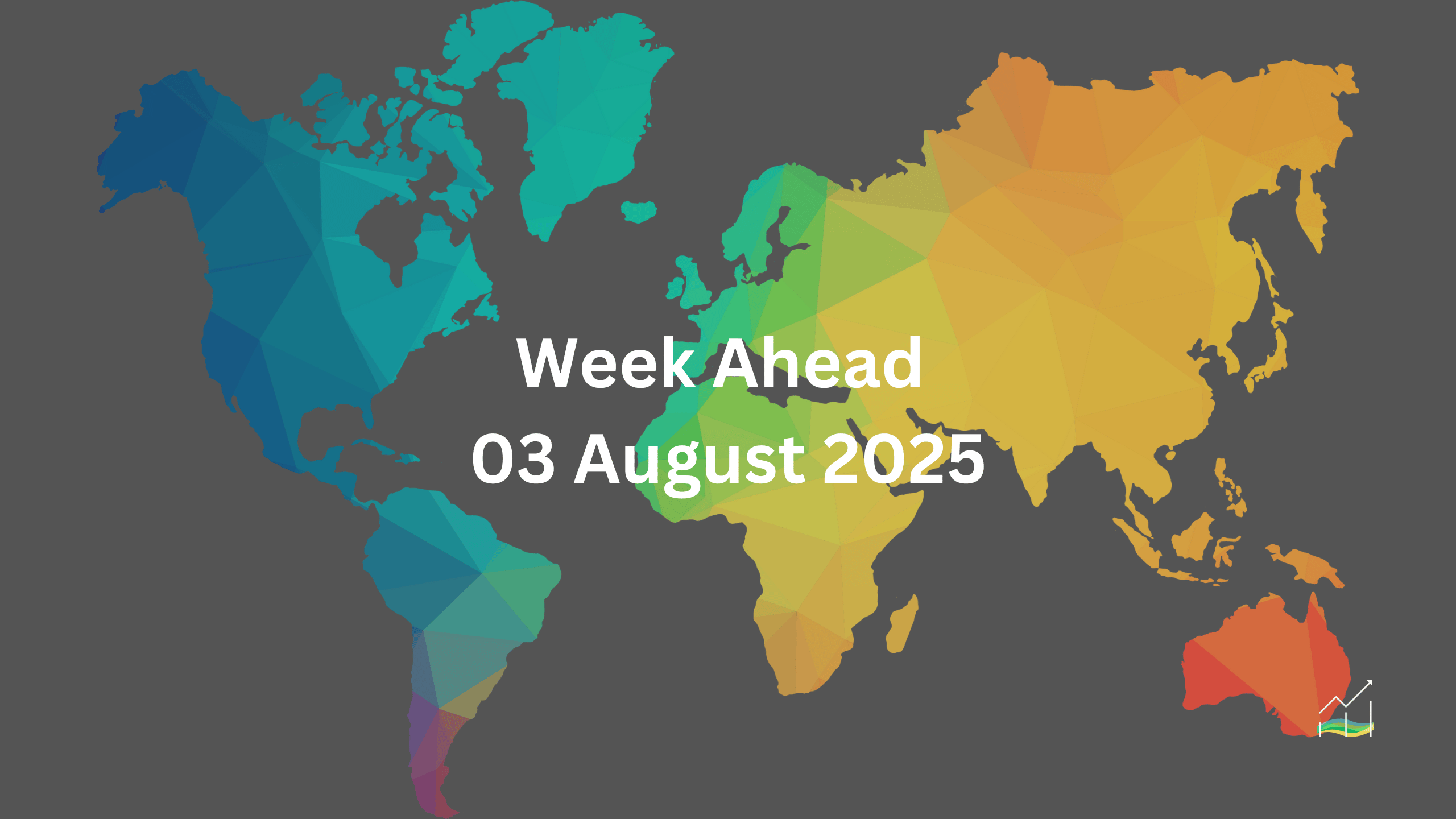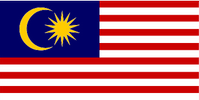03/08/2025 Week Ahead

August’s Breaking Point: Tariffs & Labor Strains
Key Takeaways:
- U.S. universal tariffs redefine global trade and heighten geopolitical risk.
- Weak U.S. labor market data increases pressure for Fed rate cuts.
- Monetary policy paths diverge sharply between major central banks.
- China strengthens its technological and strategic influence.
- August is a critical turning point for markets, not a seasonal slowdown.
Contrary to popular belief, August is far from quiet this year. Global markets are poised for volatility, driven by significant economic disruptions and geopolitical shifts. Key among these is the aggressive deployment of universal tariffs by the United States, aiming not merely at trade rebalancing but a broader economic realignment favoring domestic producers. This unilateral approach underscores Washington’s intent to reshape global supply chains while leveraging trade policies for geopolitical concessions.
The U.S. labor market, once a beacon of economic strength, is now showing clear signs of cooling. Increasing unemployment, slowing wage growth, and declining job openings collectively suggest weakening momentum. The Federal Reserve, having paused interest rate adjustments throughout 2025, faces renewed pressure to restart easing policies as early as September. Upcoming discussions at the Jackson Hole Economic Policy Symposium are expected to heavily influence this shift, with labor market conditions a central focus.
Globally, monetary policy divergence is increasingly evident. While the Fed hesitates, central banks such as the Bank of England and the Reserve Bank of Australia are moving forward with rate cuts in response to slowing growth. Market expectations point to similar actions from the Reserve Bank of New Zealand, whereas the European Central Bank, Swiss National Bank, and Bank of Canada approach the end of their easing cycles. This divergence highlights the complexity facing global policymakers amid uneven economic conditions.
China, meanwhile, adopts a subtler yet strategic approach. Recent measures, including tightened export controls on crucial electric vehicle battery components, illustrate China's calculated moves to safeguard technological dominance. Concurrently, China’s diplomatic outreach through the Belt and Road initiative, especially in the global South, presents a strategic alternative to the prevailing U.S.-centric order. This dual-track approach underscores China's broader ambitions beyond immediate trade disputes.
Ultimately, August represents not a lull but a critical juncture, with universal tariffs, geopolitical instability, divergent monetary policies, and technological tensions redefining global economic dynamics. Investors and policymakers alike must remain vigilant, prepared to swiftly adapt in this rapidly evolving landscape.
United States of America
Overview
The U.S. dollar’s July rally, fueled by rising rates and unexpectedly strong economic data, ended sharply following a weak July jobs report. This labor market weakness confirmed concerns raised by two dissenting Federal Reserve governors regarding a potential stall in employment growth. Slowing hiring, rising household debt, and higher prices caused by tariffs now pose a risk to consumption, the primary driver of the U.S. economy.
GDP growth in the first half of the year was heavily distorted by trade and inventory fluctuations, but growth is expected to slow in the second half. While the Fed has been on hold this year, market expectations have shifted toward at least two rate cuts, with a higher probability of three rather than one. Meanwhile, U.S. tariff revenues have surged to $126 billion through July compared to $55 billion during the same period in 2024, tightening financial conditions further despite also replenishing the Treasury’s General Account.
These tariffs, widely viewed by economists as a tax on consumption, could weigh on household spending and potentially deepen the economic slowdown. Despite the increased tariff revenue, the budget deficit is still projected to widen from $1.8 trillion in 2024 (around 6.4% of GDP), underscoring the structural challenges facing the U.S. economy.
Economic Drivers
- Weak July jobs data signals slowing labor market momentum.
- Rising household debt stress and tariff-driven price increases threaten consumption.
- Fed officials increasingly divided on the timing of future rate cuts.
- Tariff revenue significantly higher year-over-year, tightening financial conditions.
- U.S. budget deficit projected to widen despite higher tariff receipts.
Data and Events
- 05 August 2025: Trade Balance
- 05 August 2025: ISM Services PMI
- 07 August 2025: FOMC Members Speaks
- 07 August 2025: 10-y Bond Auction
- 07 August 2025: Unemployment Claims
- 08 August 2025: 30-y Bond Auction
- 08 August 2025: Consumer Credit
Price Action
- Dollar Index faces potential downside if the 97.85 level is broken.
- Market pricing suggests increased probability of Fed rate cuts in coming months.
- Tariff-related risks could fuel further dollar weakness.
Key Points:
- U.S. labor market weakness supports case for multiple Fed rate cuts.
- Tariffs act as a tax on consumption, weighing on growth.
- Dollar outlook depends on labor market trends and Fed policy expectations.
- Budget deficit projected to widen despite record tariff revenue.
Australia & New Zealand
Overview
The Reserve Bank of Australia (RBA) surprised markets in July by holding its overnight cash target at 3.85% after rate cuts in February and May. Governor Michele Bullock emphasized that the easing cycle is not over but will remain gradual, with further progress on moderating price pressures required. The latest data supported this cautious stance, as Q2 CPI eased to 2.2% year-over-year from 2.4% in Q1, marking its lowest level since Q1 2021.
Market expectations remain strongly tilted toward further easing. Futures pricing suggests a 93% probability of a rate cut at the RBA’s August 12 meeting and at least one additional cut later this year. The swaps market currently projects a terminal rate between 3.0% and 3.25%, indicating a measured approach to monetary policy adjustment while maintaining focus on sustaining economic stability.
The Australian dollar experienced a notable shift in July. After reaching a yearly high near $0.6625, the currency lost momentum, finishing the month down 2.4%, its first monthly decline since February. Despite this pullback, it found support near $0.6400, and a move above $0.6550 could revive the uptrend.
Economic Drivers
- RBA holds rates at 3.85% following cuts in February and May.
- Governor Bullock signals that rate cuts will remain gradual to ensure inflation moderation.
- Q2 CPI eased to 2.2%, the lowest since Q1 2021, reinforcing the case for further easing.
- Futures market prices in a high probability of an August rate cut, followed by at least one more in Q4.
- Swaps market anticipates a terminal rate between 3.0% and 3.25%.
Data and Events
- 04 August 2025: MI Inflation Gauge
- 06 August 2025: Employment Change (NZD)
- 06 August 2025: Unemployment Rate (NZD)
- 07 August 2025: Goods Trade Balance
- 07 August 2025: Inflation Expectations (NZD)
Price Action
- Australian dollar peaked near $0.6625 before retreating in July.
- Support established near $0.6400, with potential for recovery if sustained.
- A move above $0.6550 would improve the likelihood of a renewed uptrend.
Key Points:
- RBA adopts a cautious approach to rate cuts despite moderating inflation.
- Inflation eases to the lowest level since early 2021.
- Markets expect a cut in August and another by year-end.
- Australian dollar shows signs of potential recovery after recent weakness.
Canada
Overview
The Canadian dollar weakened against the US dollar in July, with the greenback rising approximately 1.8%. The pair initially tested the lower end of a two-month range near CAD 1.3555 before rebounding to a two-month high near CAD 1.3880 by the end of the month. This move was largely driven by broad US dollar strength rather than domestic Canadian factors. The rolling 30-day correlation between USD/CAD and the Dollar Index currently stands above 0.75, a significant increase from February when it briefly dipped below 0.20, the lowest level since August 2023.
The Bank of Canada (BoC) kept rates unchanged at its late-July meeting, signaling that it may consider further easing after front-loading previous cuts. However, the swaps market remains uncertain about whether another cut will happen this year, despite growing expectations that the Canadian economy contracted in Q2 and may stagnate in Q3. Market pricing currently reflects an 87% probability of a rate cut before year-end, but a full cut is not even fully priced for 2026.
Canada’s broader economic strategy continues to focus on reducing reliance on the US by diversifying trade ties with Europe and addressing internal trade barriers between provinces. Meanwhile, the OECD estimates that the Canadian dollar is nearly 21% undervalued on a purchasing power parity basis, ranking it as the third most undervalued G10 currency behind the Japanese yen and the euro. While this implies a fair value around CAD 1.14, a more realistic outlook points to a potential move toward CAD 1.31–1.34 next year.
Economic Drivers
- US dollar strength remains the primary driver of USD/CAD movements.
- Bank of Canada holds rates steady while signaling potential for future cuts.
- Swaps market shows an 87% probability of a cut by year-end but no firm pricing for 2026.
- Canada focuses on trade diversification and reducing internal trade barriers.
- OECD sees the Canadian dollar as the third most undervalued G10 currency at nearly 21%.
Data and Events
- 05 August 2025: Trade Balance
- 07 August 2025: Ivey PMI
- 08 August 2025: Employment Change
- 08 August 2025: Unemployment Rate
Price Action
- USD/CAD rose 1.8% in July, reversing five months of declines.
- Support formed near CAD 1.3555, resistance near CAD 1.3880.
- Long-term valuation models suggest potential for CAD strength toward CAD 1.31–1.34 in 2026.
Key Points:
- Canadian dollar weakness was primarily driven by US dollar strength.
- BoC remains cautious but open to further rate cuts.
- Markets see an 87% chance of a rate cut by year-end.
- Canada pursues trade diversification and domestic reforms.
- Long-term valuation models imply room for Canadian dollar appreciation.
China
Overview
The Chinese yuan reached a marginal new high for the year against the US dollar in July, with the People's Bank of China (PBOC) managing the pace of gains through its daily reference rate. Officials have shown increased flexibility in setting this rate, with the average daily change now larger than in the early months of the year. This signals a more dynamic approach to currency management as China balances domestic economic challenges with external trade pressures.
Despite tariffs from the United States and other countries, China posted a record Q2 trade surplus of nearly $314 billion, following a $272 billion surplus in Q1 and $252 billion in Q2 2024. Meanwhile, China’s Q2 GDP was estimated at 5.2% year-over-year, but questions remain over the quality of growth. The property sector continues to weigh on prices, consumption, and overall economic sentiment, reflecting deep structural imbalances in the economy.
A growing focus in China’s economic discussion is the concept of "anti-involution," which highlights the pressure on prices and profits created by excessive investment. While consumption has been increasing faster than in most countries, investment has risen even more rapidly, leading to a persistent imbalance between the two. Much of this is driven by access to patient capital from state-owned banks, encouraging competition for market share rather than profitability. Furthermore, local governments continue to aggressively invest in emerging industries such as steel, solar panels, artificial intelligence, electric vehicles, and batteries, further reinforcing the cycle of over-investment.
Economic Drivers
- Yuan strength moderated by PBOC through flexible daily reference rate adjustments.
- Record Q2 trade surplus of $314 billion despite external tariffs.
- Q2 GDP growth estimated at 5.2% year-over-year, with structural concerns linked to the property sector.
- Rising focus on "anti-involution" caused by over-investment pressures on prices and profitability.
- State-owned bank lending and local government competition drive continued investment in key industries.
Data and Events
- 05 August 2025: Caixin Services PMI
- 07 August 2025: Trade Balance
- 07 August 2025: USD-Denominated Trade Balance
- 09 August 2025: CPI
- 09 August 2025: PPI
Price Action
- Yuan reached a new high for 2025 against the US dollar in July.
- PBOC managed gains through daily reference rate adjustments.
- Market focus remains on whether the yuan can sustain strength if structural economic pressures persist.
Key Points:
- Yuan strength was carefully managed by the PBOC.
- China posted a record Q2 trade surplus despite tariffs.
- Structural economic concerns remain due to property market weakness and over-investment.
- "Anti-involution" reflects pressure on profits from excessive investment.
- Local government-driven investment continues to shape China’s growth dynamics.
Europe
Overview
The euro ended its six-month rally in July, falling nearly 3.2% after dropping from a near four-year high around $1.1830 at the start of the month to approximately $1.1400 by the end of July. While this move fell short of key technical retracement levels, the correction may be nearing completion. The euro remains supported by expectations for a potential Federal Reserve rate cut in September, which has reduced the US dollar’s yield advantage. Our year-end target for the euro remains $1.20, and this could still prove conservative if the market shift continues.
The decline in the US two-year yield premium over Germany, which dropped from above 200 basis points for most of July to a near four-month low of around 180 basis points at the beginning of August, has been a crucial factor in stabilizing the euro. Meanwhile, the derivatives market is currently pricing in approximately 15 basis points of easing by the European Central Bank (ECB) for the remainder of the year, translating to a 60% probability of one cut.
Geopolitically, the 15% US tariff on certain European exports, notably autos and pharmaceuticals but excluding metals, has added further complexity. The larger trade and investment agreements, including proposed $750 billion purchases of US energy and $600 billion in direct investment, remain unresolved. These agreements face a challenging approval process within the European Union, requiring the backing of 55% of member states representing 65% of the EU population, along with European Parliament approval.
Economic Drivers
- Euro fell 3.2% in July after a six-month rally.
- US two-year yield premium over Germany declined from above 200 bp to around 180 bp.
- Market pricing shows a 60% probability of one ECB rate cut this year.
- Federal Reserve expected to deliver larger rate cuts, increasing pressure on the US dollar.
- US tariffs of 15% imposed on EU autos and pharmaceuticals, with major trade agreements still pending approval.
Data and Events
- 05 August 2025: Final Services PMI
- 05 August 2025: PPI
- 06 August 2025: Retail Sales
- 07 August 2025: German Industrial Production
- 07 August 2025: German Trade Balance
Price Action
- Euro dropped from $1.1830 to $1.1400 in July.
- Correction may have ended, with potential for a rebound if Fed cuts materialize.
- Year-end target of $1.20 remains in place, with risks tilted toward further upside.
Key Points:
- Euro correction in July appears to be stabilizing.
- US yield premium over Germany has narrowed, supporting the euro.
- Fed cuts remain a key driver for euro upside potential.
- EU faces hurdles in approving large trade and investment deals.
- ECB expected to proceed with limited easing in 2025.
Japan
Overview
The Japanese yen remained under heavy pressure in July, falling by around 4.4% and becoming the weakest G10 currency for the month. Despite this, it is still up roughly 4.0% year-to-date. The US dollar peaked near JPY151 before the release of disappointing US employment data, which may limit further gains for the greenback. Market focus now shifts toward the potential for the dollar to retreat toward JPY145 in the near term if US interest rates continue to face downward pressure.
The dollar-yen exchange rate remains closely linked to two primary drivers: the broader direction of the US dollar and movements in the US 10-year Treasury yield. Over the last 30 and 60 sessions, the correlation between USD/JPY and the Dollar Index has been about 0.85, while its correlation with the US 10-year yield has been slightly above 0.75 in the past 30 sessions and just below 0.55 over the last 60 sessions.
On the geopolitical front, the US and Japan appear to have reached a trade agreement that includes a 15% levy on Japanese imports to the US, particularly autos and parts, which account for around 80% of Japan's trade surplus with the US. However, disagreements remain over the proposed $550 billion direct investment from Japan into the US. Japan has agreed to continue importing US rice under its quota system and will not impose new safety regulations on US auto imports, despite limited demand from Japanese consumers for larger and less fuel-efficient American vehicles. Political uncertainty in Japan has also intensified after the ruling party lost its upper house majority, adding pressure on Prime Minister Ishiba’s leadership.
Economic Drivers
- Yen fell 4.4% in July, making it the weakest G10 currency.
- Dollar-yen correlation with the Dollar Index remains high at 0.85.
- Correlation with the US 10-year yield is 0.75 (30 sessions) and 0.55 (60 sessions).
- US-Japan trade agreement includes 15% tariff on Japanese auto and parts exports.
- Political pressure on Prime Minister Ishiba after losing upper house majority.
Data and Events
- 04 August 2025: Monetary Base
- 05 August 2025: Monetary Policy Meeting Minutes
- 06 August 2025: Average Cash Earnings
- 07 August 2025: Leading Indicators
- 08 August 2025: Household Spending
- 08 August 2025: BOJ Summary of Opinions
- 08 August 2025: Current Account
Price Action
- Dollar peaked near JPY151 before US employment data.
- Potential for a move toward JPY145 as weaker US labor data weighs on yields.
- Yen remains influenced by the correlation with the Dollar Index and US yields.
Key Points:
- Yen was the weakest G10 currency in July, down 4.4%.
- Dollar-yen direction tied closely to US dollar strength and Treasury yields.
- US-Japan trade agreement includes significant auto tariffs.
- Political instability in Japan adds uncertainty.
- Potential short-term move for dollar-yen toward JPY145.
United Kingdom
Overview
Sterling surged to nearly $1.3790 in early July, its strongest level since October 2021, before reversing as the US dollar recovered and UK economic data weakened. By the end of July, sterling had fallen to around $1.3140, its lowest level since mid-May, before stabilizing after the US employment data on August 1.
The Bank of England is widely expected to cut rates at the upcoming August 7 meeting, which would bring the base rate down to 4.00%. Markets are also fully pricing in another rate cut in Q4, with the terminal rate projected to be around 3.50%. Despite the anticipated monetary easing, a move above $1.3400 could support a recovery toward $1.36 in the near term.
The UK's fiscal challenges remain a pressing issue. While there are proposals to use confiscated crypto assets to help improve the budget, they are unlikely to meaningfully address the broader structural problems. Meanwhile, political divisions persist within both major parties, and Nigel Farage's Reform UK Party continues to gain traction in this environment of uncertainty.
Economic Drivers
- Anticipation of a Bank of England rate cut to 4.00% at the 07/08 meeting, with markets also pricing in another cut in Q4.
- Weak UK economic performance exacerbating fiscal challenges, with structural reforms yet to be addressed.
- Limited fiscal relief from proposals such as using confiscated crypto assets, which would only have marginal impact.
- Political divisions within both Labour and Conservative parties creating an opening for Nigel Farage's Reform UK Party.
Data and Events
- 05 August 2025: Final Services PMI
- 06 August 2025: Construction PMI
- 07 August 2025: BOE Monetary Policy Report
- 07 August 2025: Monetary Policy Summary
- 07 August 2025: MPC Official Bank Rate Votes
- 07 August 2025: Official Bank Rate
- 08 August 2025: MPC Member Speaks
Price Action
- Sterling fell from a peak of $1.3790 in early July to $1.3140 at the end of the month, before stabilizing.
- Move above $1.3400 could trigger a recovery toward $1.36.
Key Points:
- Sterling hit a 34-month high in early July before retreating sharply.
- A Bank of England rate cut to 4.00% is widely expected on August 7.
- Fiscal challenges persist, with limited relief from marginal policy proposals.
- Political fragmentation is fueling gains for Nigel Farage’s Reform UK Party.
- A potential rebound toward $1.36 remains possible if sterling clears $1.3400.
© 2025 SKONE Enterprise (003319453-V). All rights reserved.
The content on this site is for informational purposes only and does not constitute financial advice.


